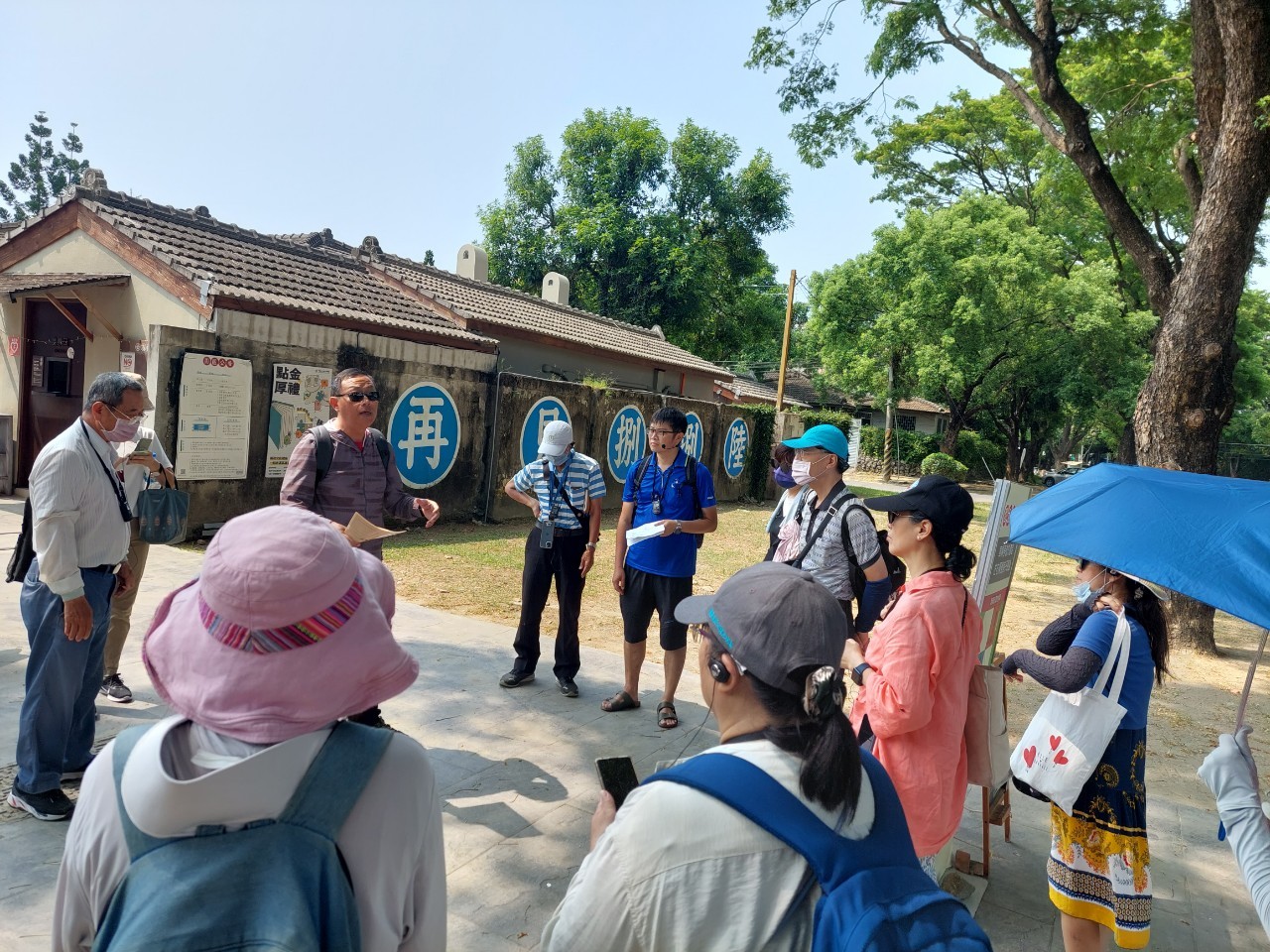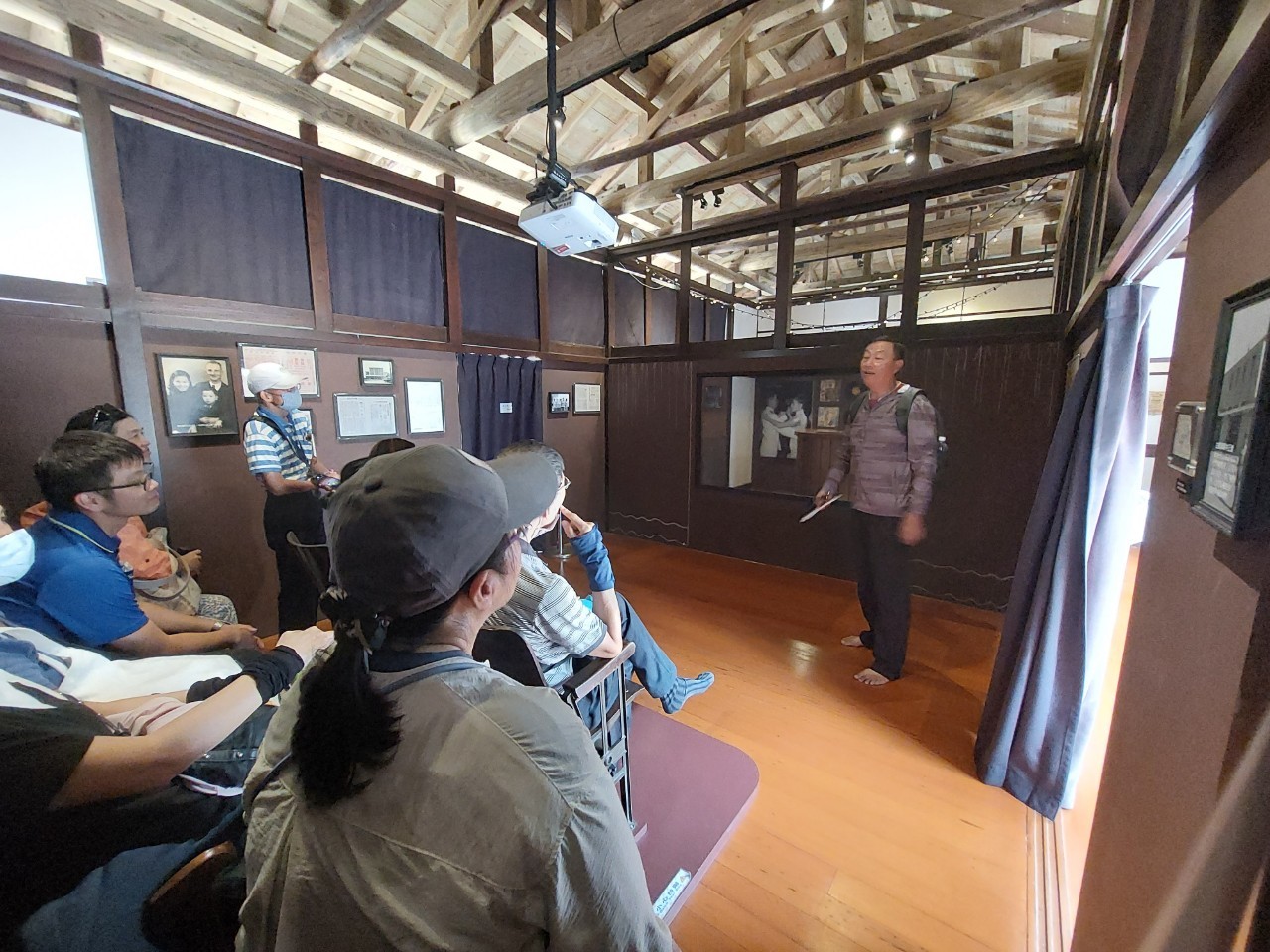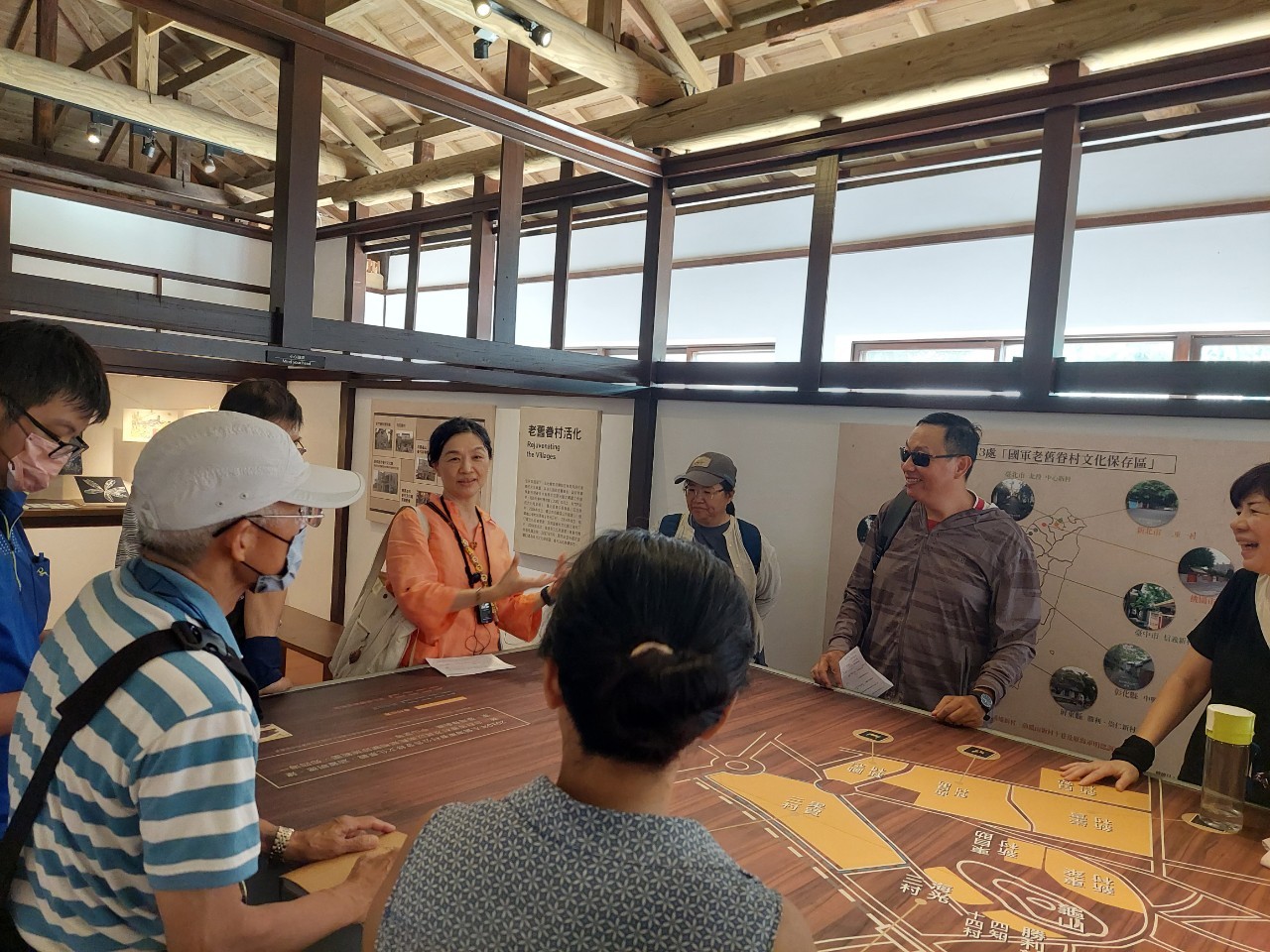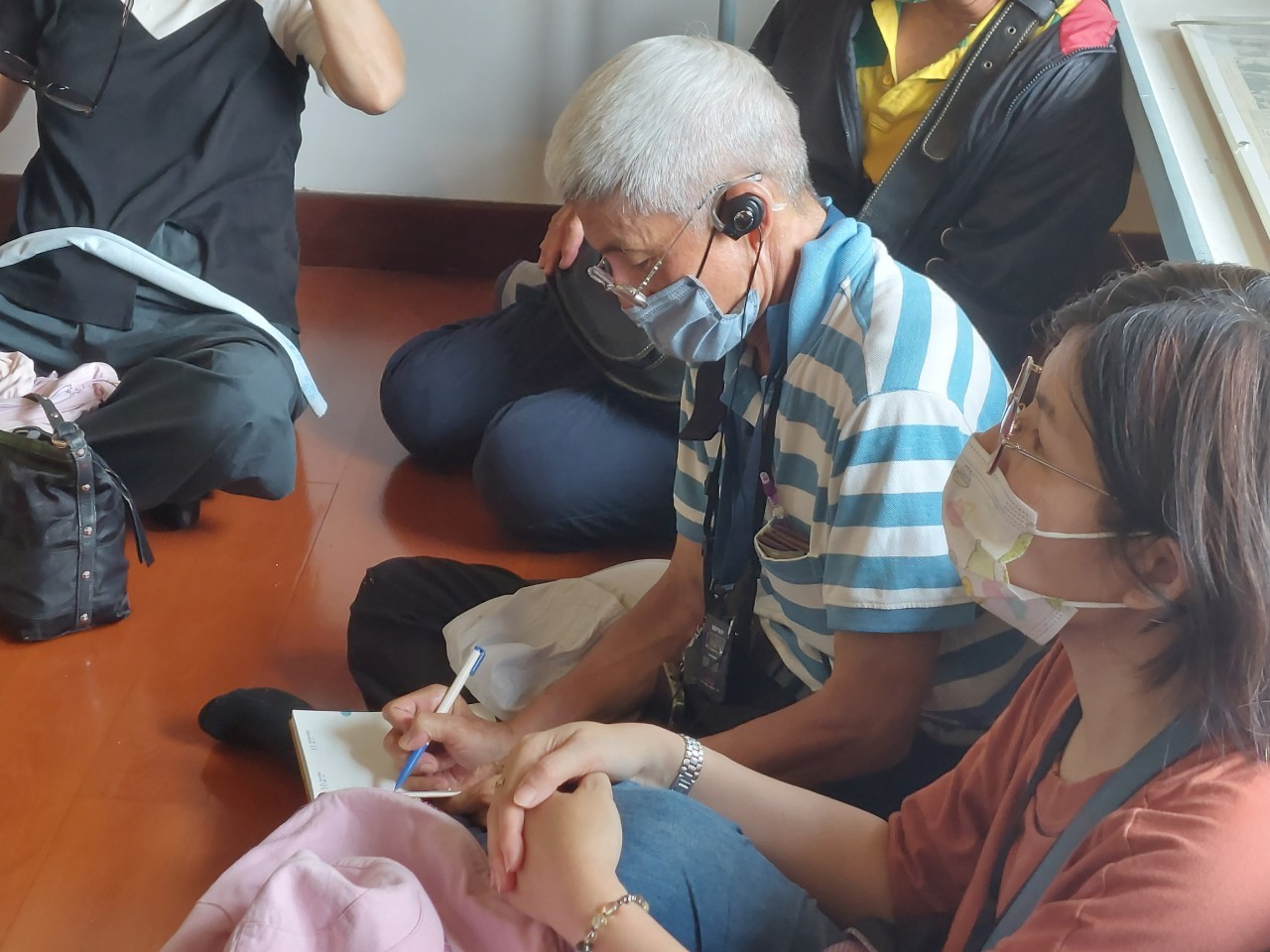by Project Student, Joy & Rose
The military dependents' village tour was led by Professor Gong Shuyong from the Foreign Language Tour Guide Community. He explained the historical background and unique culture of Kaohsiung's 886 Military Dependents Village to community members. Additionally, community members guided participants on a tour of the "Farewell 886, Cultural Park of Taiwan Military Veteran Village," using lively and engaging explanations to help participants better understand the history and anecdotes of the villages, adding a unique sense of fun to the entire walking tour.
The event focused on the origins of the military dependents' villages, with the exhibition featuring 12 different themes, such as "Prelude: Civil War," "Home away from home...," "Introducion: One more ethnic group in Taiwan," "Impact on modern Taiwan," "What's a MDV," "What’s 886," and "Anecdotes," among others. Professor Luis also highlighted the uniqueness of Taiwan's military dependents' villages, noting that the scenes inside are reminiscent of the famous 1985 film *The Spring Outside the Fence*.
After the Chinese Civil War, a large influx of new immigrants arrived in Taiwan along with the government, prompting reactions from the indigenous population. Whether for better or worse, both sides had to find ways to coexist. To ease the conflicts between locals and newcomers, people from the same regions who spoke the same language were often placed in the same areas, gradually forming what we now know as "military dependents' villages." This process fostered the development of Taiwan's cultural diversity, turning the island into a melting pot of various cultures and nurturing unique ideologies and values.
Before entering Shoushan, the guides specifically reminded the audience how to avoid contact with the local wildlife, particularly the monkeys, to prevent accidental injuries. Along the way, everyone passed by the habitat of the Taiwan Barbet, known for its five colors: green, red, yellow, blue, and black. During the journey, the program host, Mr. Lin Yicheng, introduced the group to the dragon scale fern. This plant, native to Southeast Asia, has a uniquely textured stem that, when gently touched and moved, feels different depending on the direction of the touch. Although its stem is not prickly, it feels both smooth and rough in different directions. The audience was also invited to touch the dragon scale fern on-site to experience its unique texture firsthand.
The culture of military dependents' villages has had a profound impact on our daily lives over four centuries of regime changes. Today, we can see foreign influences in many areas, such as dialects, music, fashion, cuisine, customs, and traditional rituals. This has allowed Taiwan's younger generation to better understand the past while being more capable of shaping the future. Through these cultural traces and heritage, they are able to maintain their cultural identity in the context of globalization and explore new possibilities. This is not only a reflection on the past but also a vision for the future.

Teacher Luis gave participants the intro of tour

Participants focused on tour

Tour guides told stories of MDV and explained the details of the map

Participants took note
